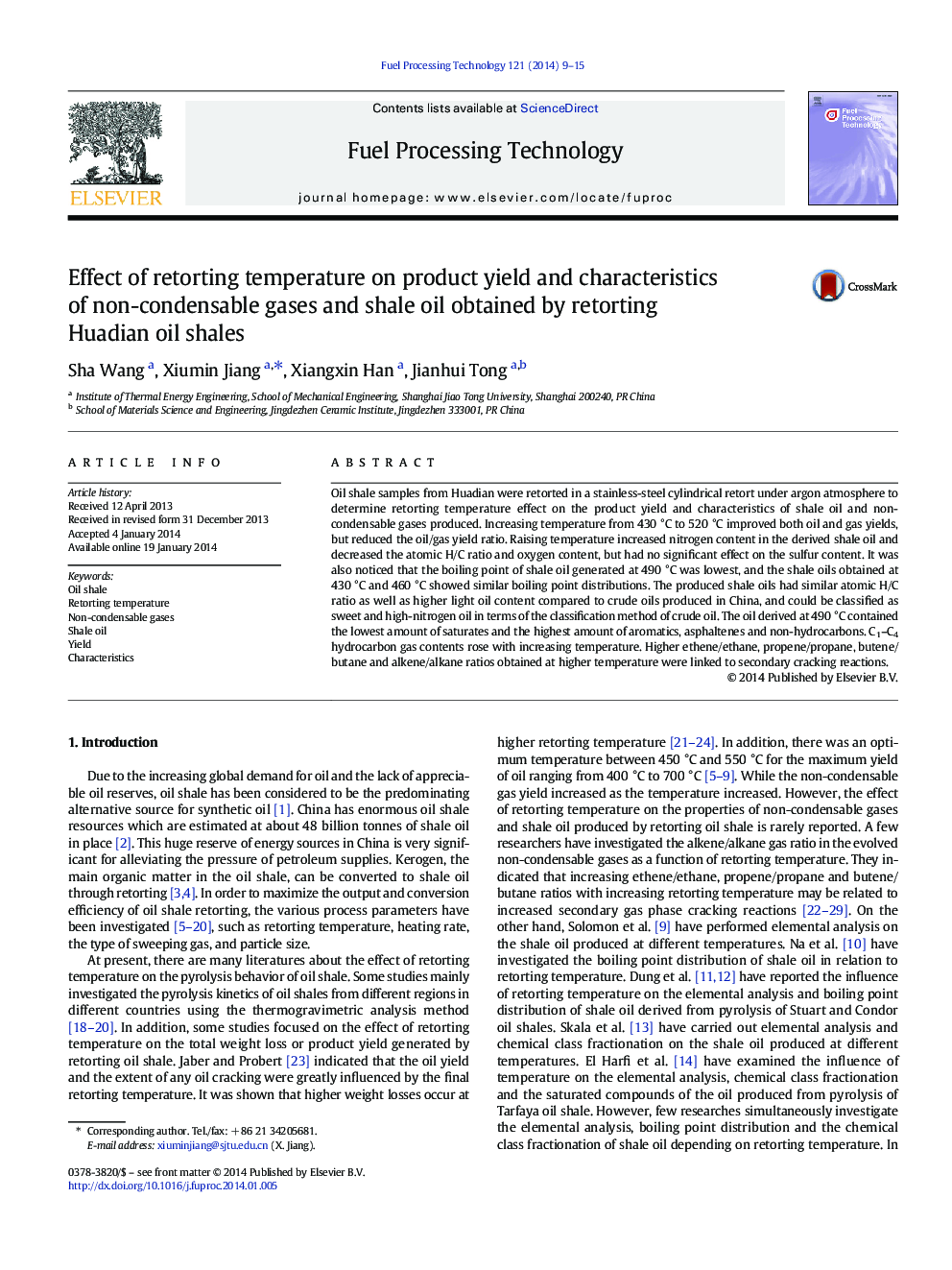| کد مقاله | کد نشریه | سال انتشار | مقاله انگلیسی | نسخه تمام متن |
|---|---|---|---|---|
| 209836 | 461685 | 2014 | 7 صفحه PDF | دانلود رایگان |

• To study temperature effect on product yield and properties of shale oil and gas.
• Higher temperature raised both oil and gases yields but reduced oil/gas yield ratio.
• To compare shale oil’s element and distilled fraction distribution to crude oils’s.
• 490 °C is a transition temperature for the content of chemical class fractions.
• Improving temperature raised C1–C4 contents and alkene/alkane gas ratios.
Oil shale samples from Huadian were retorted in a stainless-steel cylindrical retort under argon atmosphere to determine retorting temperature effect on the product yield and characteristics of shale oil and non-condensable gases produced. Increasing temperature from 430 °C to 520 °C improved both oil and gas yields, but reduced the oil/gas yield ratio. Raising temperature increased nitrogen content in the derived shale oil and decreased the atomic H/C ratio and oxygen content, but had no significant effect on the sulfur content. It was also noticed that the boiling point of shale oil generated at 490 °C was lowest, and the shale oils obtained at 430 °C and 460 °C showed similar boiling point distributions. The produced shale oils had similar atomic H/C ratio as well as higher light oil content compared to crude oils produced in China, and could be classified as sweet and high-nitrogen oil in terms of the classification method of crude oil. The oil derived at 490 °C contained the lowest amount of saturates and the highest amount of aromatics, asphaltenes and non-hydrocarbons. C1–C4 hydrocarbon gas contents rose with increasing temperature. Higher ethene/ethane, propene/propane, butene/butane and alkene/alkane ratios obtained at higher temperature were linked to secondary cracking reactions.
Journal: Fuel Processing Technology - Volume 121, May 2014, Pages 9–15